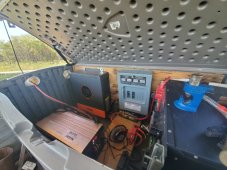Just installed the breaker box and new powmr hybrid unit. Solar 48 volt system turning the powmr which is the only source of ac power turns off the shock between touching my trailer and securing framework. I am hoping someone can help me with this because I don't know what is next. I was surprised by the 62volt as it is half what my system is supposed to generate.
I took the whole hybrid unit apart and checked each individual ac wire fairly thorough and found no damaged insulation. Can 120v even short t 62v?
I took the whole hybrid unit apart and checked each individual ac wire fairly thorough and found no damaged insulation. Can 120v even short t 62v?




